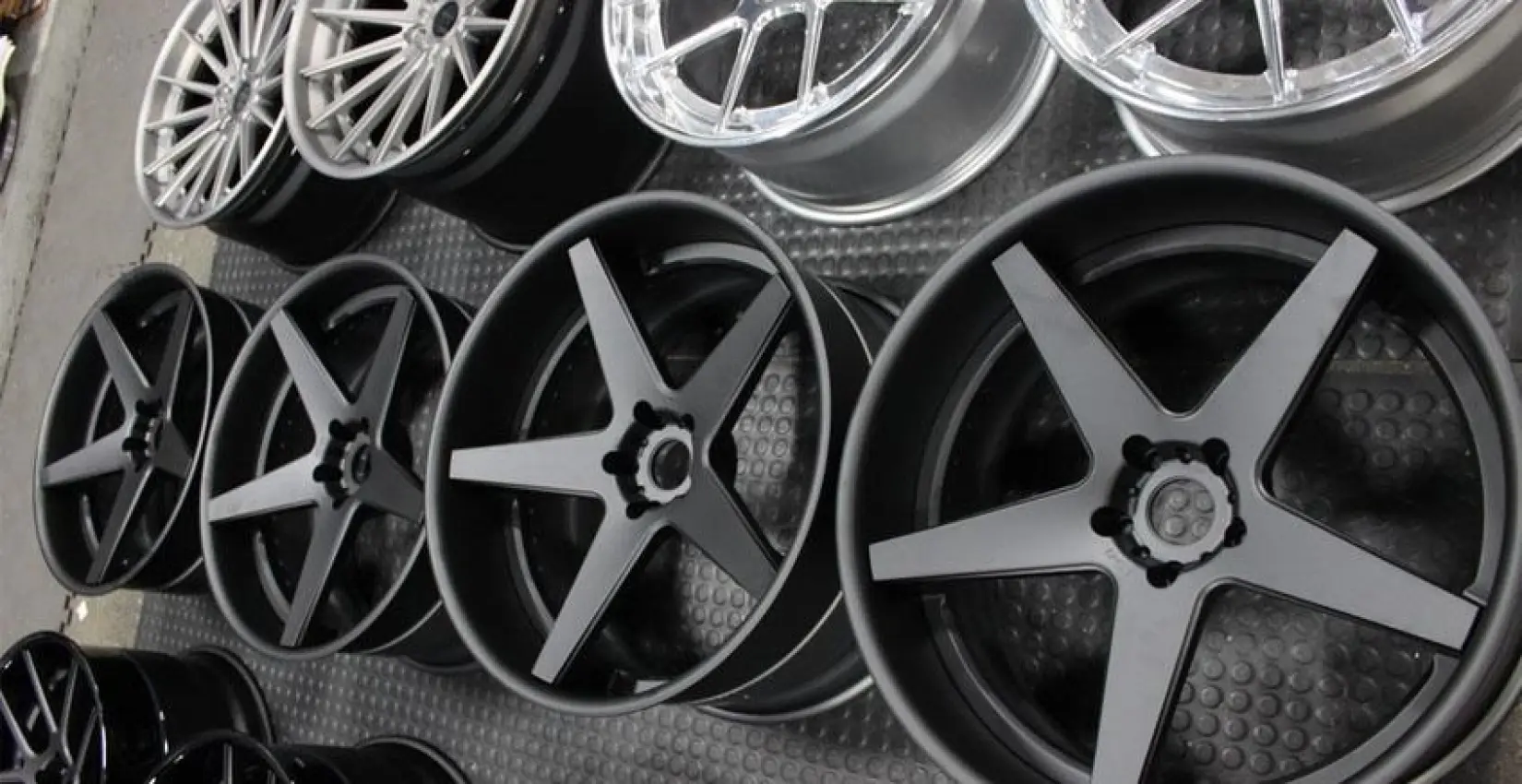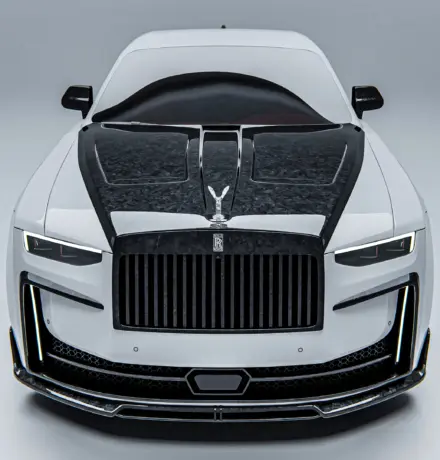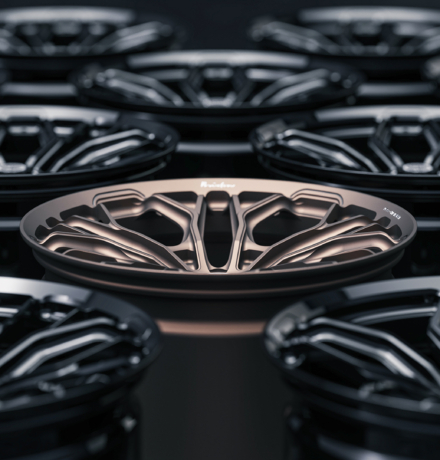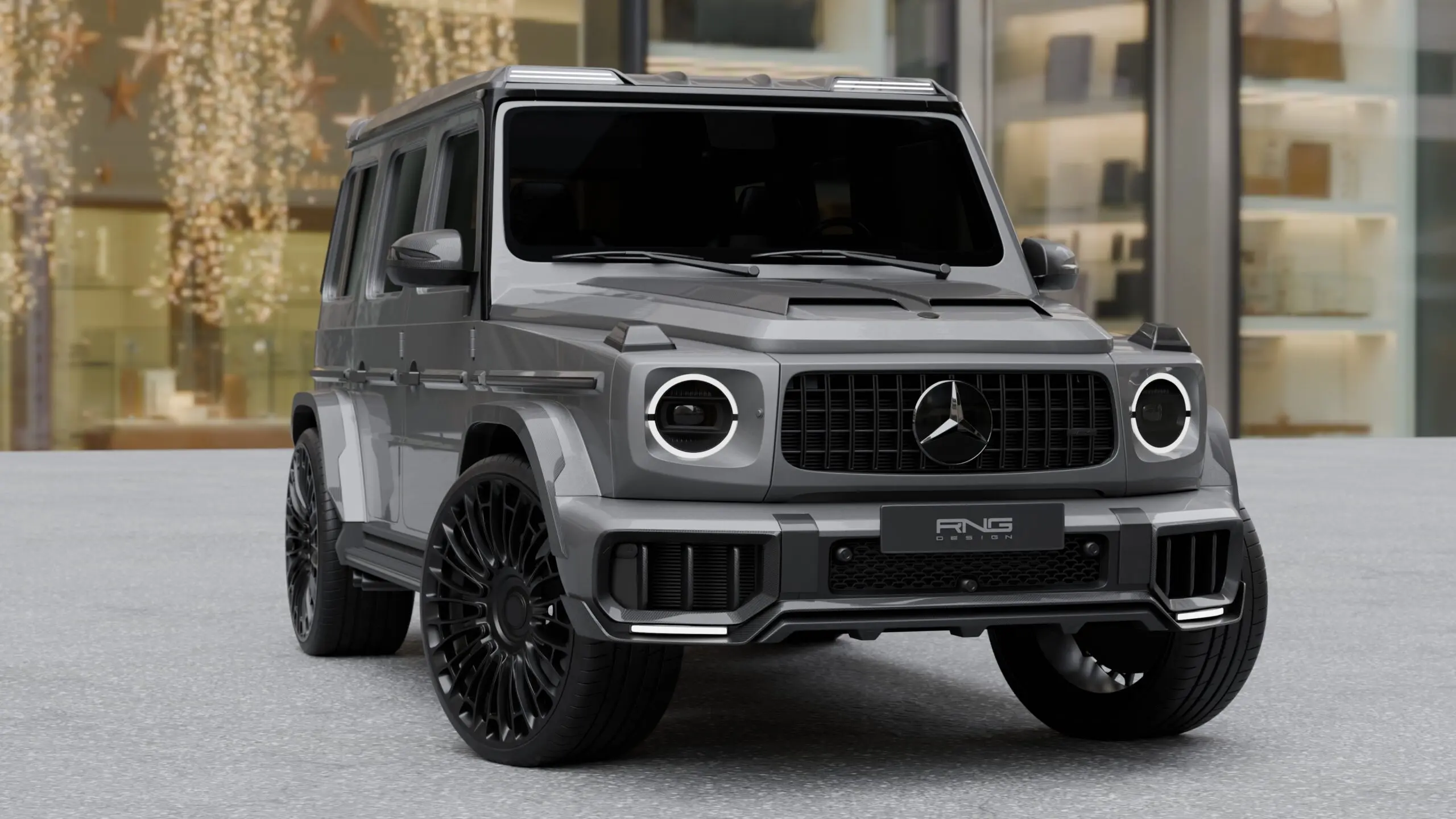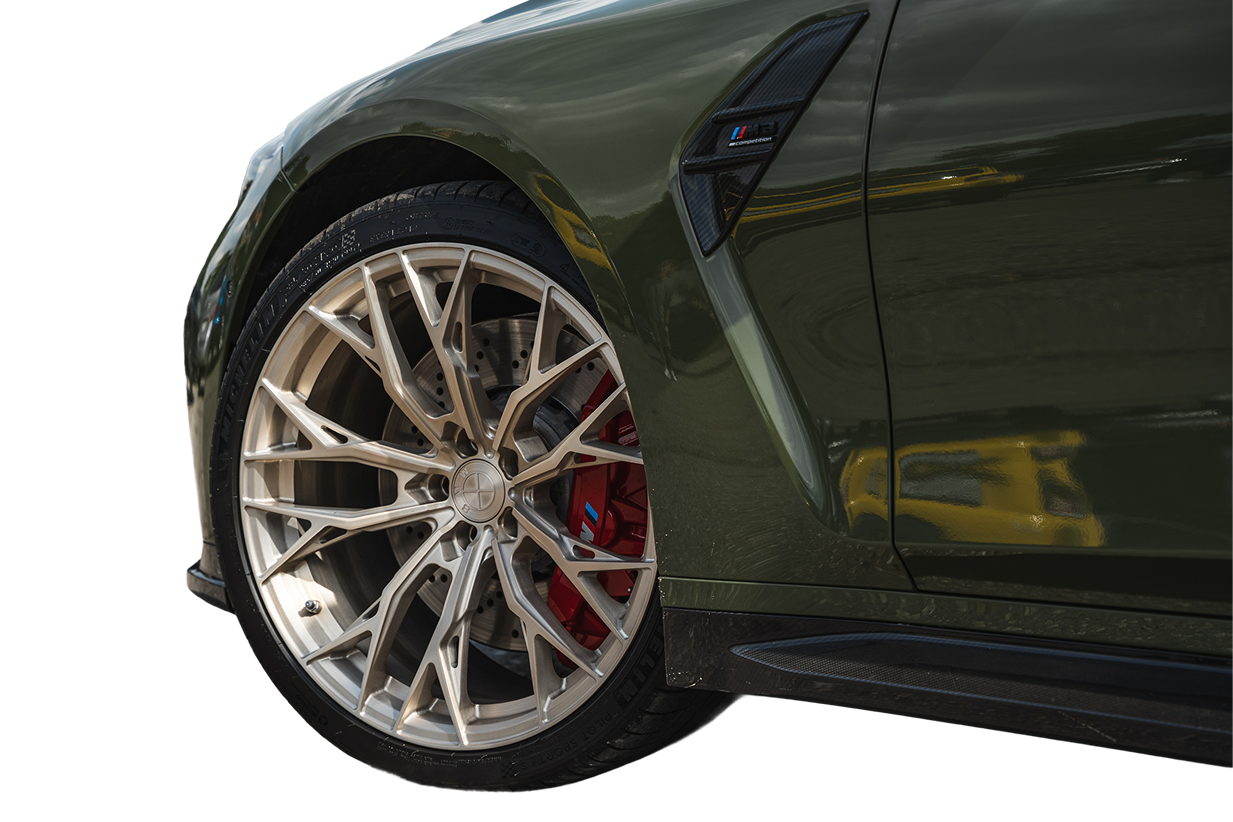Car tuning is the improvement of a vehicle’s appearance and features to enhance performance or uniqueness. Wheel tuning involves replacing standard wheel rims with more stylish or improved options. These processes can make a car more attractive or customized to suit the owner’s personal preferences.
Varieties of rims
Stamped (steel):
- Are usually the cheapest, durable but heavy.
- Often come in basic car packages, for winter tires.
Cast:
- lighter than steel disks, which has a positive effect on handling and fuel consumption.
- wide choice of designs, sizes.
Forged:
- the strongest, lightest among aluminum rims, but the most expensive.
- used in sports or high-performance cars.
Hybrid:
- offer a unique combination of lightness, strength and stylish appearance.
Titanium:
- provide even greater lightness, strength.
- Rarely used due to high cost.
Tuning of stamped wheels
Unwelding is the process of modifying stamped (steel) rims by changing their width. This is accomplished by cutting the rims into two pieces with a metal spacer between them, after which the parts are welded back together.
Benefits of Unwelding
- Can improve the appearance of the car, as well as provide a wider area of contact between the tire and the road, potentially improving handling.
- May cost less than buying new wide rims.
Disadvantages of unwelding
- Welds are weaker than the original metal, increasing the risk of cracks and breakage.
- Improper welding can lead to air leaks from the tires.
- Errors in the process can lead to an unbalanced wheel, adversely affecting handling with tire wear.
Materials and tools for rim unwelding
- Steel rims suitable for unwelding.
- Spacer ring of suitable diameter and thickness.
- Semi-automatic or argon-arc welding.
- Grinder for cleaning edges before welding, and for scraping welds afterward.
- Measuring tools for aligning parts.
- Gloves, protective mask, overalls.
How to weld stamped disks yourself
- mMark out the cutting points. Make sure that the spacer ring corresponds exactly to the diameter of the cut.
- Using an angle grinder, carefully cut the disk into two parts.
- Finish the edges of the cut pieces.
- Carefully align the parts, clamp them together to prevent shifting during welding.
- Weld the parts, paying special attention to the quality, evenness of the seams.
- Clean the welds, inspect the work for defects and tightness.
- Paint the welds to prevent corrosion.
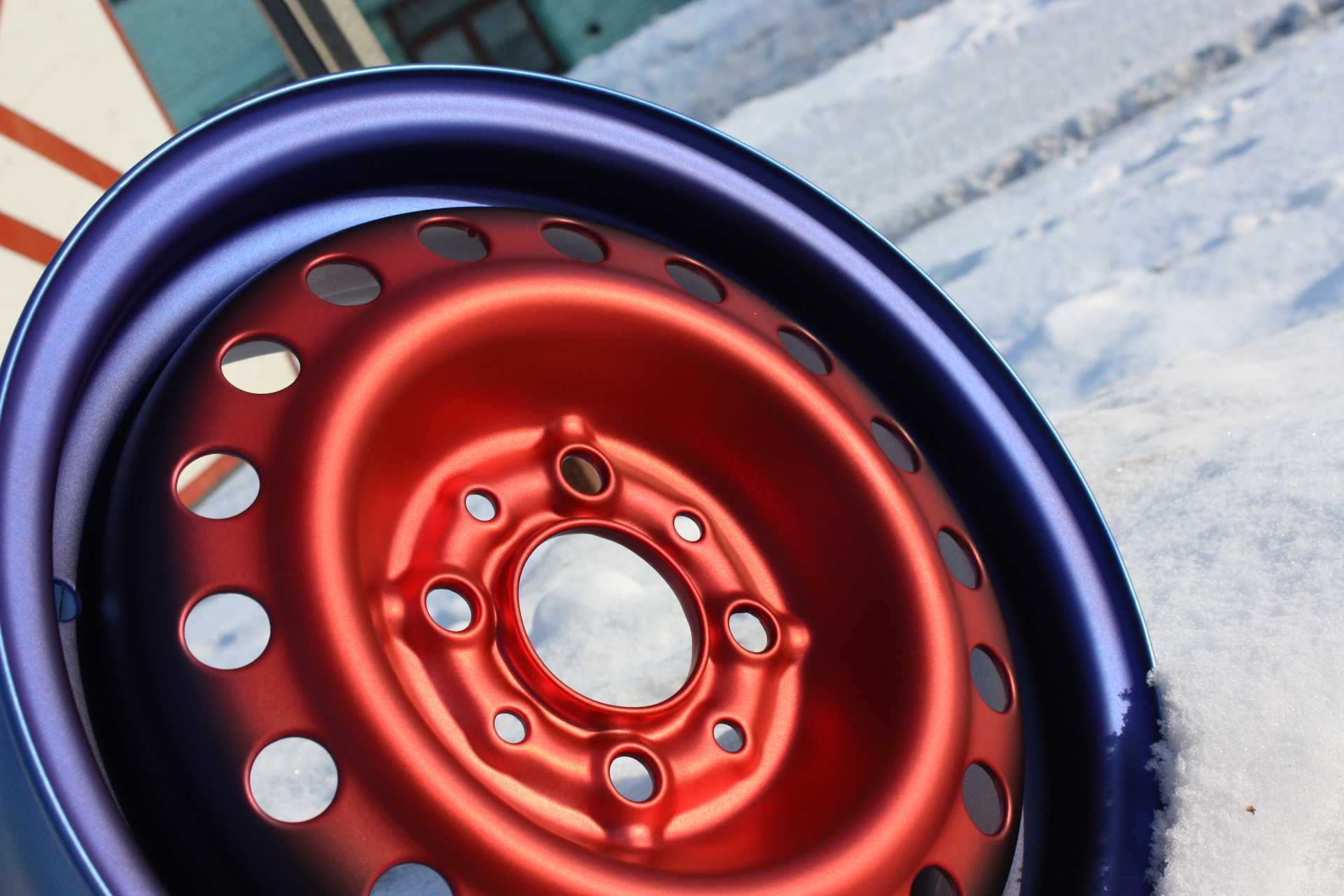
Options for tuning the rims on a car
- Hoopers are decorative rings that are installed on the edge of the wheel rim. They can be made of different materials — metal or plastic, often used to add color or style to regular stamped discs.
- Chrome plating is the process of applying a layer of chrome to the surface. This not only gives a shiny, mirror-like appearance, but also helps protect the metal from corrosion.
- Mirror polishing gives a highly reflective surface that can noticeably improve the overall visual effect of the car. This process involves multiple steps of sanding with polishing until a near mirror-like shine is achieved.
- Inlaying involves adding decorative elements such as stones, patterns or other materials. This can be done by laser engraving or by embedding various materials directly into the structure of the disk.
- Spinners are a type of wheel rims that have additional rotating elements that continue to spin even after the car has stopped. They give a dynamic, sometimes hypnotizing effect to your car.
The choice of a particular type of tuning depends on personal preference, cost for the desired effect.
Wheel rim illumination
Backlighting is a popular tuning method that adds a spectacular element to the overall appearance of the car, especially at night.
Materials:
- LED tapes: specially designed for cars, highly resistant to moisture or damage.
- Controllers, dimmers: to control the color, brightness, flashing mode of LEDs.
- Wires, connectors: for connecting LED strips to the electrical system of the car.
- Insulating tape, heat-shrink tubing: to protect the connections.
Tools:
- Screwdriver: for mounting or dismounting of fastening elements.
- Pliers, wire cutters: for working with wires.
- Multimeter: For checking voltage and proper connection.
- Drills, drills: For creating holes for wires, if necessary.
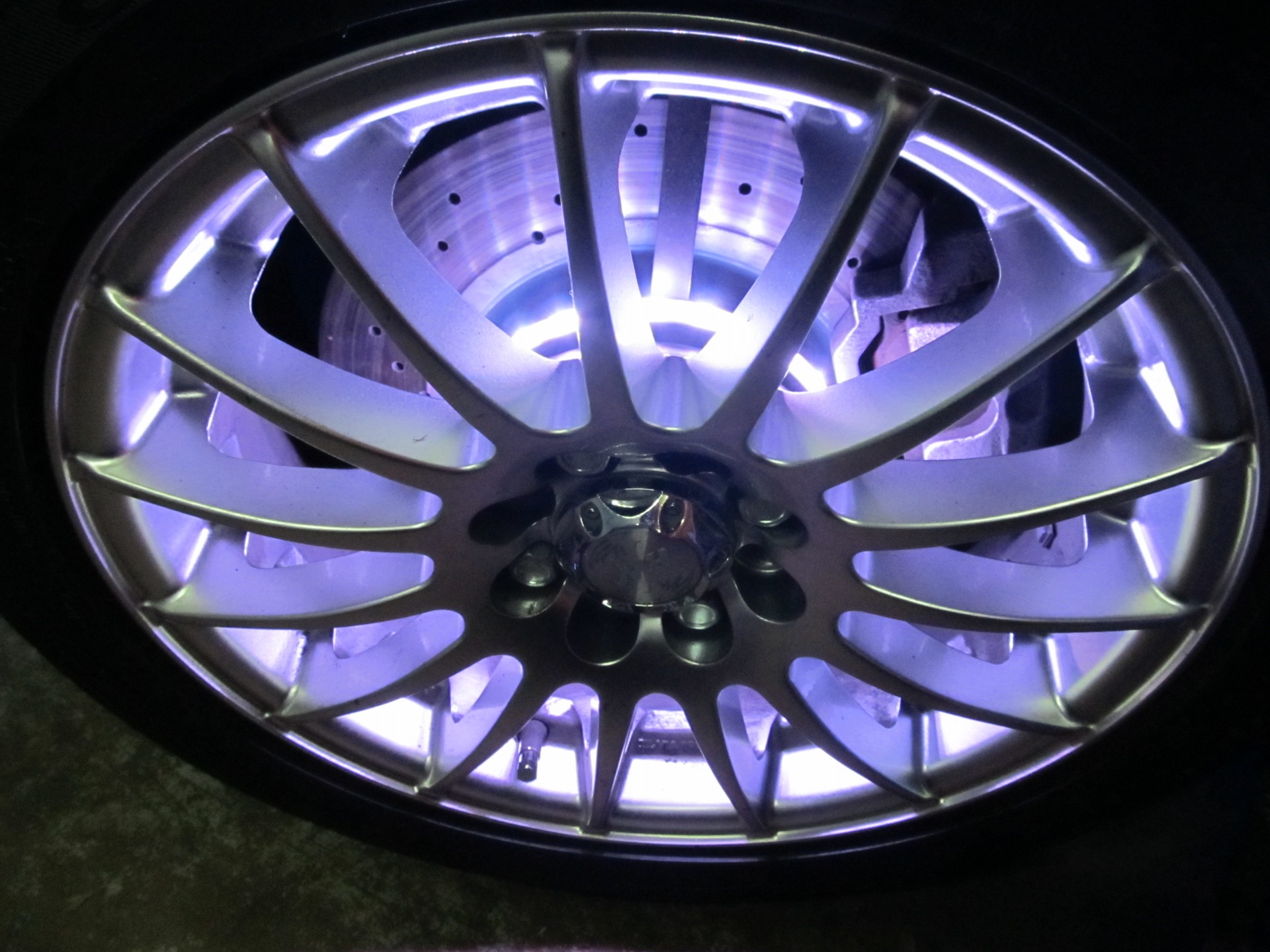
The process of tuning with backlighting
- Clean the surface where the backlight will be installed to ensure good adhesion. Lay out all materials with a tool for convenience.
- Measure and cut the required length of LED strip.
- If necessary, drill small holes for wires or fasteners.
- Attach the LED strip using an adhesive backing or additional fasteners if necessary.
- Route the wires to the nearest power source, ensuring that all connections are securely insulated.
- Connect the wires from the LED strips to the controller using the diagram provided with the controller.
- Connect the controller to the vehicle’s power source (a connection to the battery or lighting system is often used).
- Use a multimeter to verify that the connections are correct and there are no short circuits.
- Test the backlight by turning it on and off several times, checking all modes of operation of the controller. Make sure that all elements are securely fastened and do not interfere with wheel movement.
- Make sure all wires are securely fastened to avoid damaging them during movement.
Aquaprinting (water printing, hydrographics)
Aquaprinting is the process of applying a variety of designs to objects using a special aqueous film that dissolves in water. This method allows you to transfer complex and multicolor images to three-dimensional surfaces.
The process of aqua printing:
- Surface preparation: the object is cleaned, sanded and coated with primer.
- Base coat: a base coat of paint is applied to the object, which will be visible through the transparent areas of the film.
- Film preparation: the film with the pattern is placed on the surface of the water in a — special pool.
- Activation: the film is treated with an activator, causing the pattern to separate from the carrier to “float” on the surface of the water.
- Immersion: the object is slowly submerged in water through the film, the pattern adheres to the surface.
- Rinsing: the object is rinsed to remove film residue.
- Final coating: the object is coated with a layer of varnish to protect the pattern.
Disk painting
Painting is one of the most popular ways to change the appearance of wheels. It can be a complete repaint or it can be the application of some accents.
The process of painting:
- Preparation: the disks are thoroughly cleaned of dirt, rust, and old paint. The surface is sanded for better adhesion of the new coating.
- Priming: a layer of primer is applied to help the paint adhere better and to protect the metal from corrosion.
- Painting: the paint may be applied in several layers to achieve the desired color consistency and evenness.
- Varnishing: the last layer is a protective varnish, which gives shine and protects the coating from mechanical damage and UV radiation.
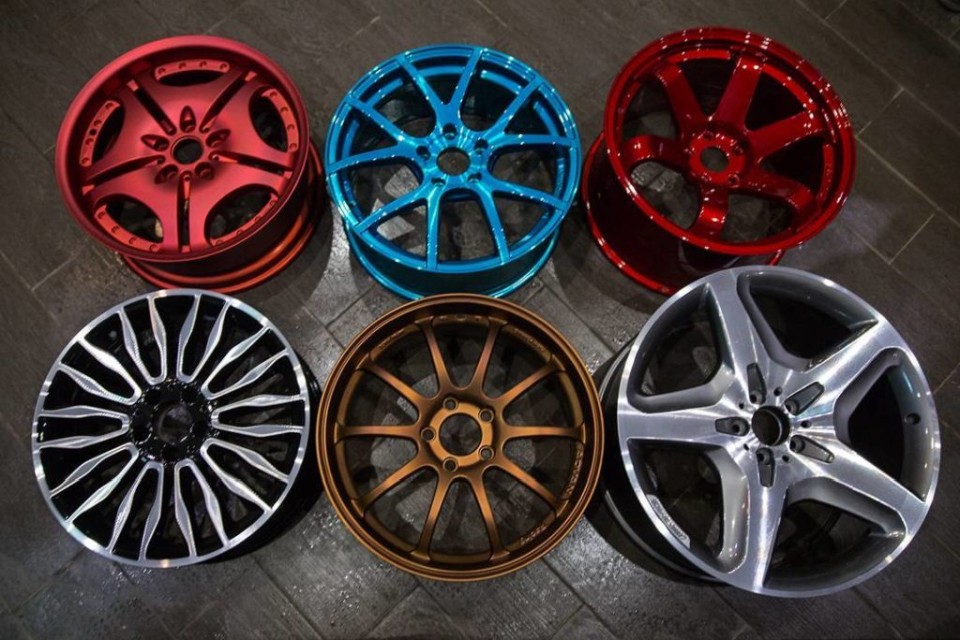
Ideas for car hubcaps tuning
- Wheel covers are an easier way to modify the appearance of the car.
- Use special paints for plastic to change the color of the hubcaps or add unique patterns. You can take templates to apply logos or graphic motifs.
- Stickers and vinyl films allow you to quickly change the look of the hubcaps, add images, patterns or text.
- Attaching decorative elements such as chrome plating or even reflective elements can give the hubcaps a more expensive look.
- Installing LED lighting around the edge of the hubcap can make your car more visible and stylish at night.
- Using water printing to apply intricate graphic patterns to hubcaps.
Rim Care Tips
- Clean dirt, dust, and road chemicals from your rims at least once a week. Use a soft sponge or brush or special cleaners.
- Inspect them regularly for scratches, chips or other damage. Small defects can be repaired yourself with paint or repair kits.
- Take special waxes or protective coatings that help protect them from dirt and also make cleaning easier.
- Don’t use aggressive cleaners or brushes that can damage the coating.
- If you are taking them down for the winter or other extended period of time, store
them in a dry, cool place and preferably in special covers to protect them from dust or moisture.









